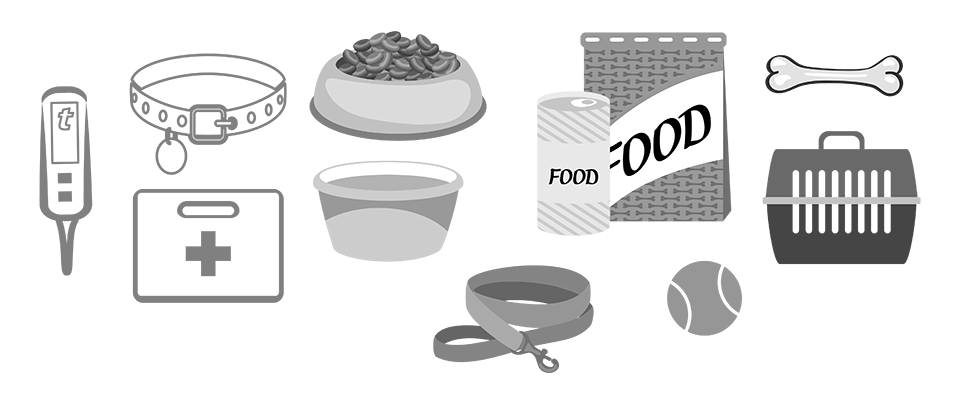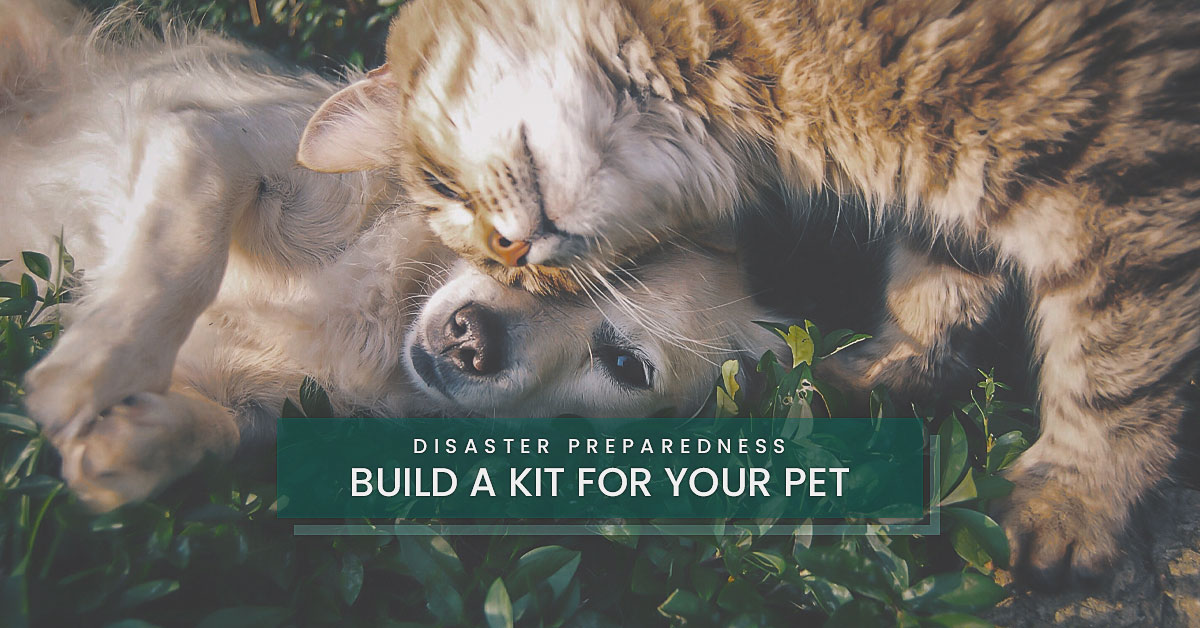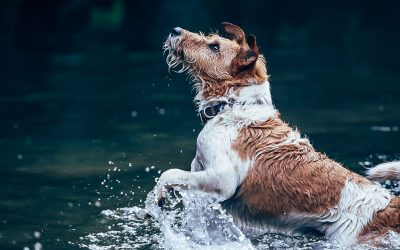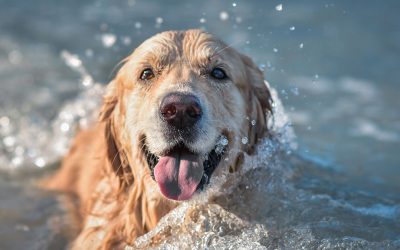Build a Kit for Your Pet
The Atlantic hurricane season extends from June 1 through November 30. Communities along the coastline as well as inland should be prepared for the dangers that hurricanes can bring. Having emergency supply kits stocked and ready to go for your family and pets will help alleviate undue stress and worry.
Build Two Kits
You should prepare two kits. One larger kit if you’re staying at home and sheltering in place. Another lightweight kit if you need to evacuate. At the beginning of hurricane season, review expiration dates and condition of the contents to ensure that foods and medicines are fresh.
Here are some items you may want to include in an emergency kit for your pet:
- Water. Store a water bowl and several days’ supply of water.
- Medicine. Keep an extra supply of medicine for your pet in a waterproof container.
- First aid kit. Ask your veterinarian about what items are most appropriate for your pet’s specific emergency medical needs.
- Collar with ID tag and a harness or leash. Include a backup leash, collar, and ID tag. Make copies of your pet’s relevant documents available electronically and keep hard copies in a waterproof container in case access to the Internet is unavailable.
- A traveling bag, crate, or sturdy carrier, ideally one for each pet. Pack Grooming items such as pet shampoo and other items, in case your pet needs some cleaning up.
- Sanitation needs. Carry items to provide for your pet’s sanitation. Include poop bags, pet litter and litter box (if appropriate), newspapers, paper towels, trash bags, and chlorine bleach.
- A picture of you and your pet together. If you become separated from your pet during an emergency, a picture of you and your pet together will help prove ownership and allow others to assist you in locating your pet.
- Familiar items. Put pet’s favorite toys, treats, and bedding in your kit. Familiar items can help reduce stress for your pet.

Tips for Large Animals
If you have pets such as horses, goats, or pigs, have a plan for them before a disaster.
- Ensure all animals have some form of identification.
- Evacuate these animals earlier if possible. Plan primary and secondary routes in advance.
- Be sure vehicles and trailers needed for transporting and supporting each type of animal is gassed up and you have experienced handlers and drivers.
- Stock destinations with food, water, and establish veterinary care and handling equipment.








